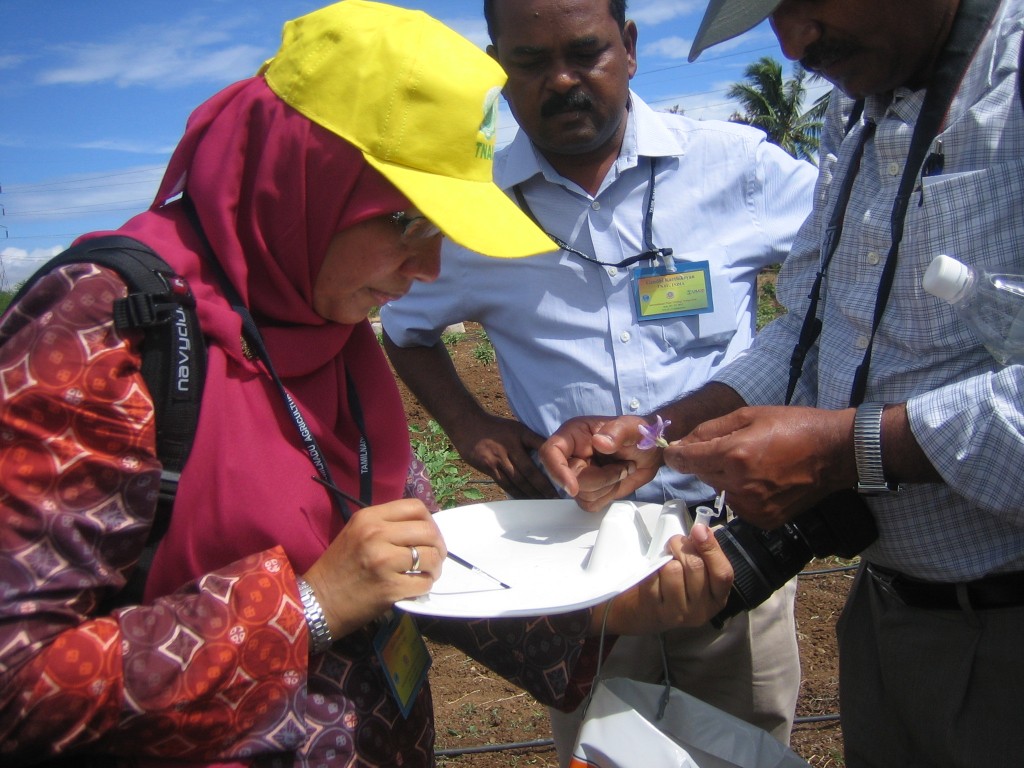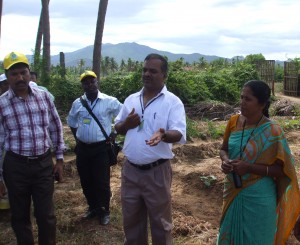Feeding more people with healthier crops: Virology symposium hosted by IPM CRSP in India

What looks like a painter’s palette is a way for entomologist Dewi Sartiami (Bogor Agricultural U) to collect insect specimens–in this case, an invasive pest called thrips–from potato plants. Assisting Dewi are Naidu Rayapati (Washington State) and Gandhi Karthikeyan (TNAU). Photo credit: IPM CRSP
A symposium organized by the Integrated Pest Management Collaborative Research Support Program (IPM CRSP) in India brings together experts in plant virus diseases to help farmers grow healthier crops.
Almost one-third of the world’s population lives in tropical Asia, with an even higher fraction in the same region being among the world’s most poor and malnourished. Food production here is critical to alleviate hunger, but plant virus diseases pose a continuing threat to food security and agricultural production.

Farmer test sites are crucial to evaluate the efficacy of IPM CRSP technology. TNAU scientists, including IPM CRSP researcher S. Mohankumar, rely on feedback from Mrs. Bapitha, a farmer from Veerakeralam village, about Trichoderma, seedlings, and varieties when developing IPM packages for cucurbits. From left to right: L. Rajendran (TNAU), Michael Osei (CSIR-CRI, Ghana), S. Mohankumar (TNAU), Mrs. Bapitha. Photo credit: IPM CRSP
In July 2012, the symposium at Tamil Nadu Agricultural University (TNAU) in Coimbatore, Tamil Nadu, India, brought together experts in plant virology and entomology to discuss plant virus disease management. Participants attended workshops and presentations and also made visits to local markets, farms, and IPM CRSP and TNAU test sites to learn about the successes and challenges related to crop production.
Miriam Rich, communications coordinator, IPM CRSP, and Amer Fayad, assistant director, IPM CRSP, participated in the symposium and documented the events in photographs.
Melissa Smith | Writer/Editor, IPM CRSP
Look for the full photo essay in the upcoming CRSP Digest newsletter.
